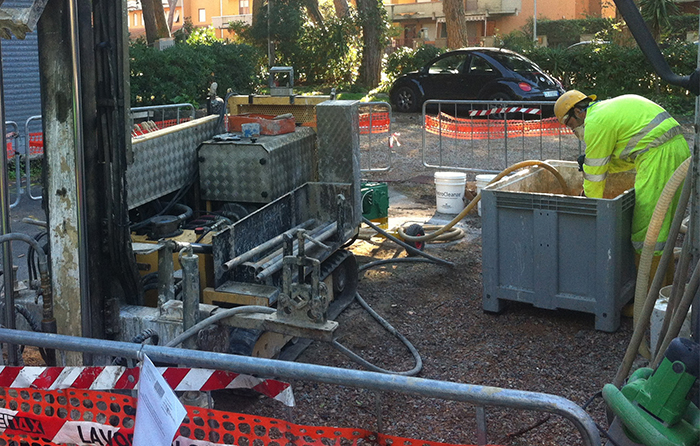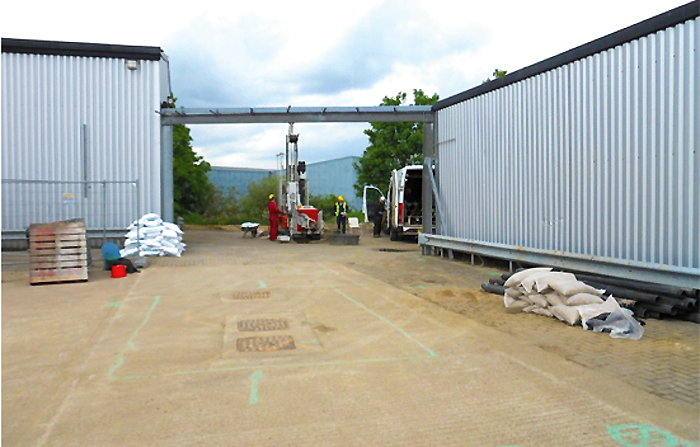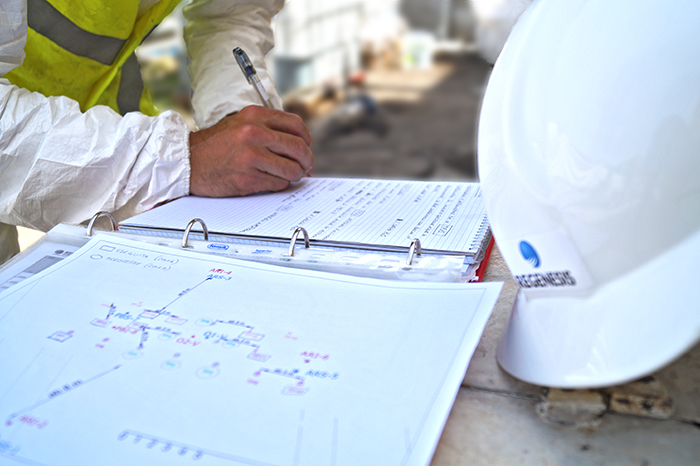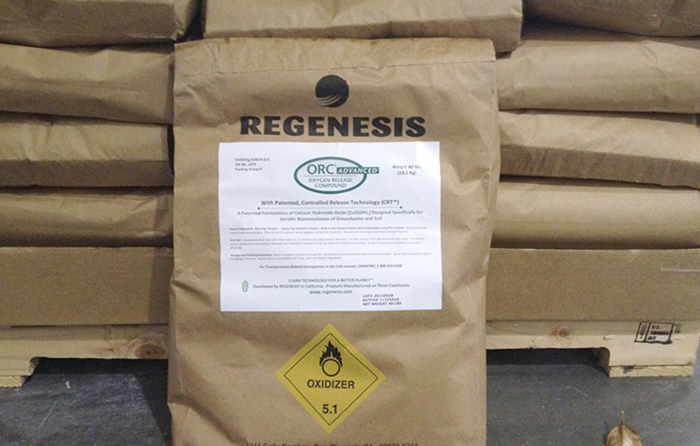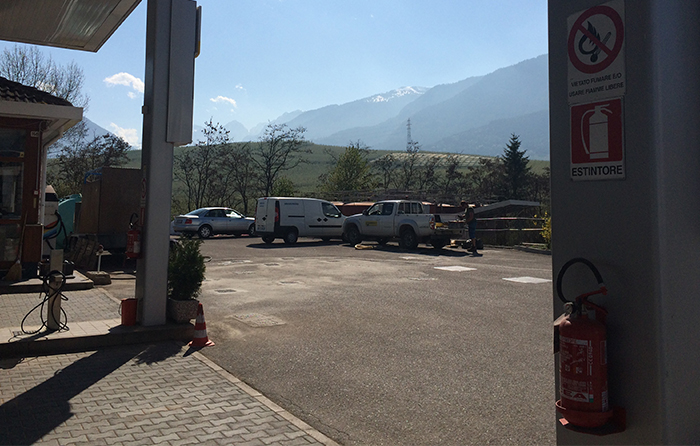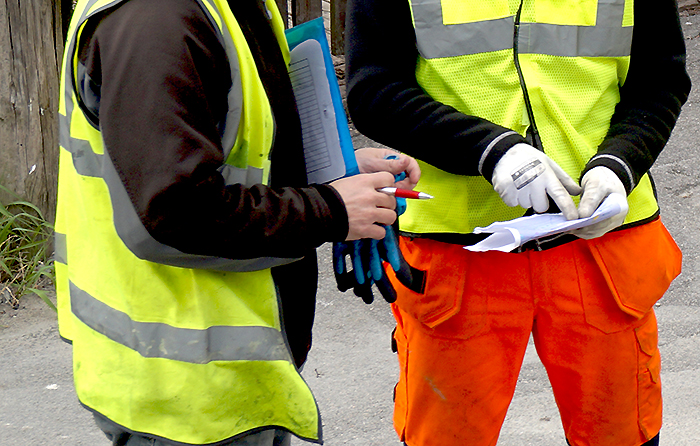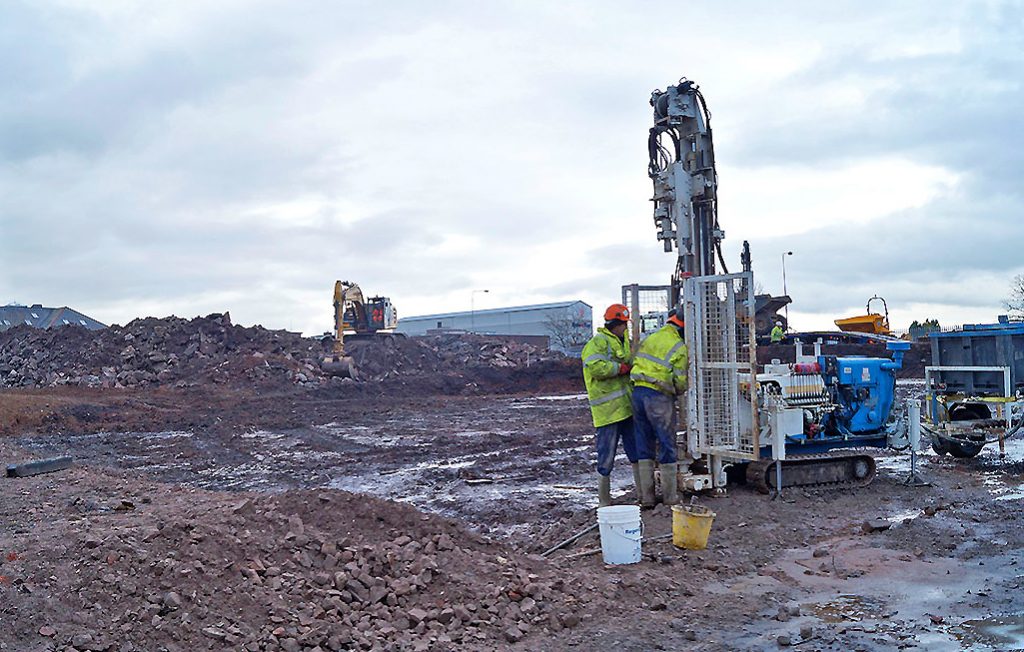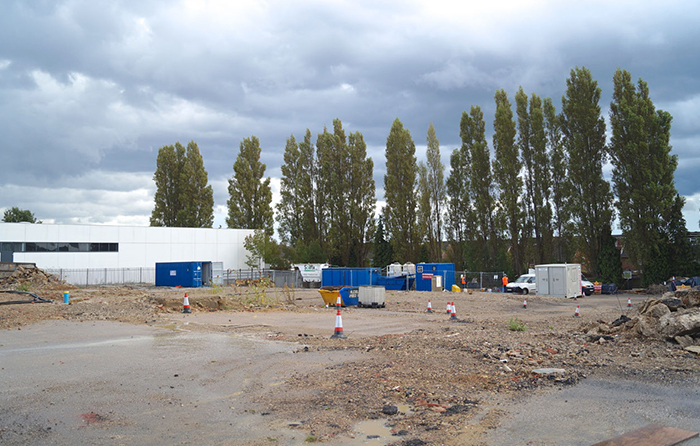Environmental In Situ Remediation of a Petrol Filling Station in Italy
In Situ enhanced physical extraction of petroleum hydrocarbonsRead More
In Situ Treatment of 1,2 Dichloroethane Under a Factory, Kent, UK
A single application reduces recalcitrant contaminant below targetRead More
MBTE Remediation at an Active Petrol Filling Station in Italy
Combination of injection activities with targeted groundwater abstraction resulted in successful treatment of non-accessible source areas Read More
Bioremediation of Petroleum Hydrocarbons, Oxfordshire, UK
Summary
Following a site investigation (SI) and the removal of 8 underground storage tanks at a former petrol filling station, it became clear that the groundwater and soils beneath the site were grossly impacted by petroleum hydrocarbons (TPH). The geology comprised of made ground underlain by weathered limestone at 1m BGL. Though the groundwater concentrations were relatively low (3,000 μg/L TPH), the high sorbed mass in the soils (up to 10,000 mg/kg) was of concern. Though the remediation strategy did allow for the excavation and treatment of the weather material, due underground utilities most of the impacted material could not be excavated for health and safety reasons, without diverting the existing underground infrastructure.
REGENESIS and the Environmental Consultant formulated a remediation strategy comprising of partial excavation of impacted material (where allowed) and in-situ enhanced aerobic bioremediation of the groundwater for betterment of underlying conditions. All to be validated by groundwater monitoring to demonstrate contaminant mass reduction across the site.
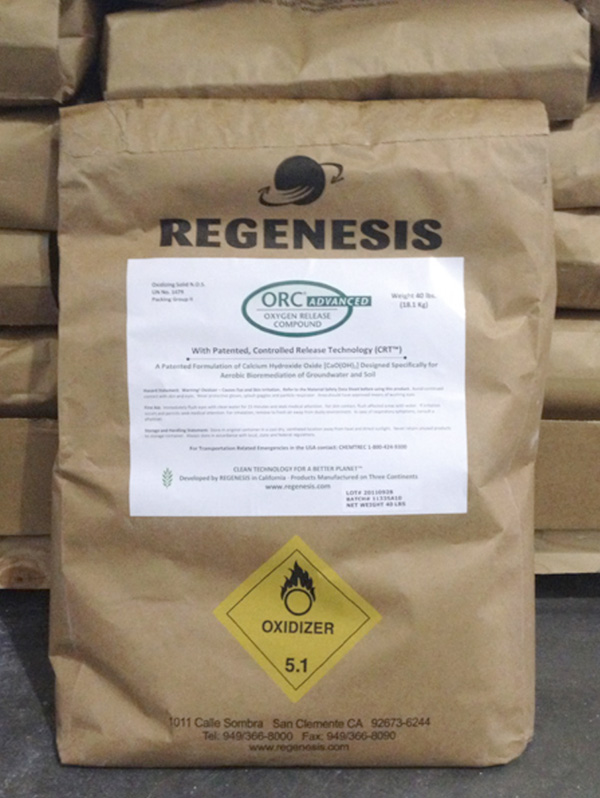
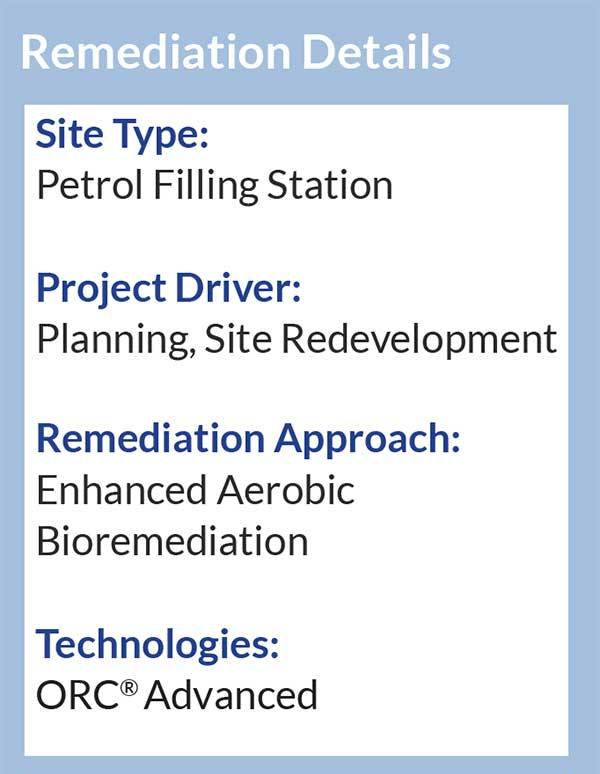
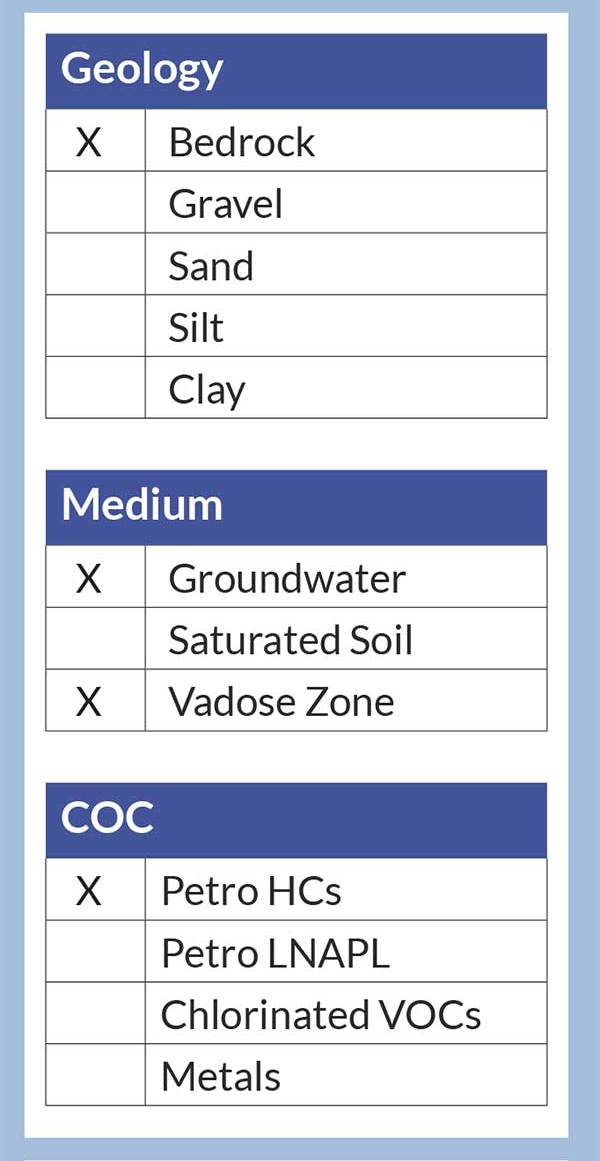
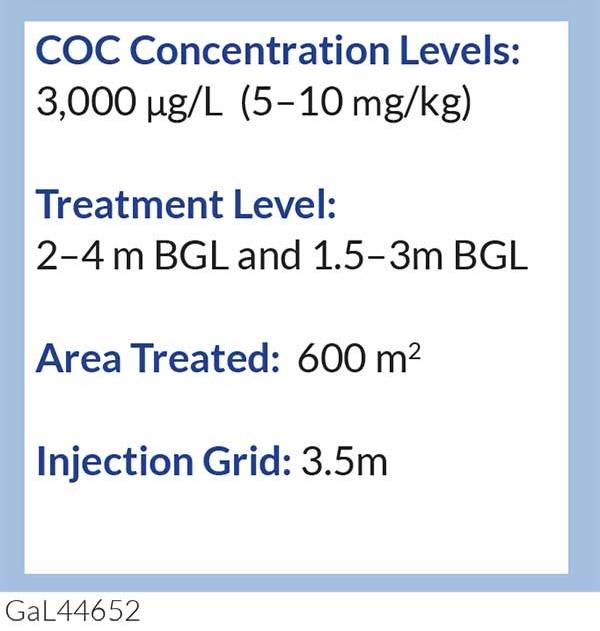
Treatment
An ORC-Advanced® slurry was injected across 54 No. wells installed into the underlying bedrock with specific doses in the northern and southern areas of the site to target where TPH had been recorded during the SI. ORC-Advanced was applied across the entire plume, in order to provide enhanced aerobic biological degradation of the dissolved phase for 12 months from a single injection.
What’s Special?
- A remediation strategy where validation of the groundwater (not soil) achieved site sign-off, resulting in quick site closure.
- The in situ remediation allowed for injection adjacent to underground utilities without damaging them, avoiding the need for excavation or re-routing infrastructure.
Remediation at Active Petrol Filling Station in North Italy
Integrated treatment of petroleum hydrocarbons via enhanced physical extraction and aerobic bioremediation with PetroCleanze and ORC AdvancedRead More
In Situ Remediation of Petroleum Hydrocarbons in Deep Chalk
From LNAPL to less than 1,000 μg/L in seven months using an integrated treatment approach Read More
Petroleum Contaminated Groundwater Treatment, West London, UK
Installation of ORC-Advanced barrier successfully reduced the contaminant influx onto the site, allowing for site redevelopment without any disruption Read More
Hotspot Treatment of Petroleum Hydrocarbons – North West, UK
Phased, in situ treatment with PetroCleanze and ORC-A Socks allows main contractor to keep programme on trackRead More
PetroCleanze Increases Efficacy of Pump and Treat System – Reading, UK
Treatment example of LNAPL and smear zone in bedrock. PetroCleanze enhanced the efficacy of the existing P&T system, reducing P&T costs onsite.Read More
Enhanced Recovery & Biodegradation of Petroleum Hydrocarbons – Sweden
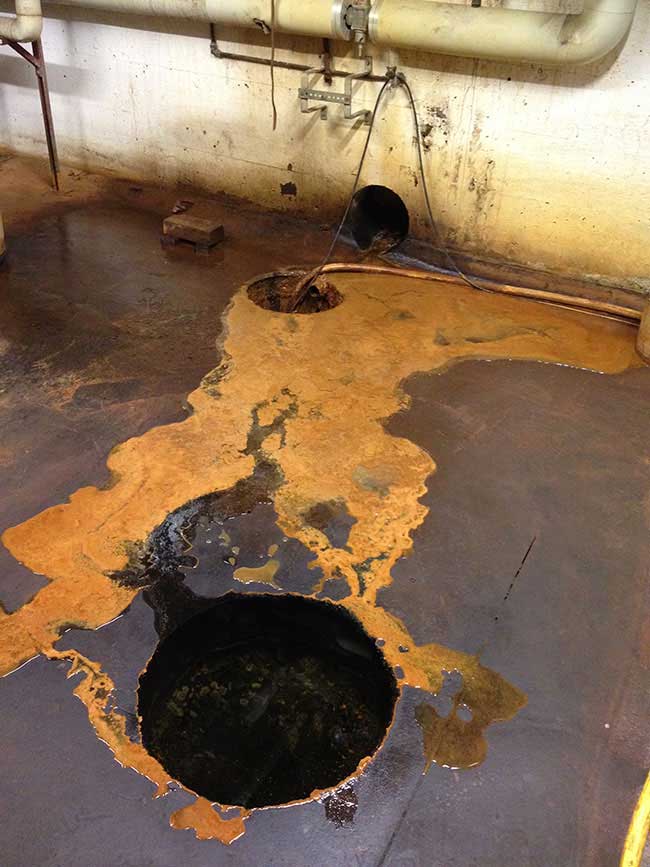
Summary
A site investigation undertaken by a remediation contractor in Växjö, Sweden, identified up to 1.4 m of LNAPL on top of the groundwater beneath an industrial unit. The source of the contamination was a boiler in the basement of the facility. It was determined that the contamination posed a vapour risk to the site users. The proposed strategy was therefore to remove the LNAPL, reduce the adsorbed mass and treat the dissolved phase contamination to low levels. This was to be completed within the building, it’s basement and the car park downgradient.

Treatment
In order to efficiently address both the free and dissolved phase petroleum hydrocarbon contamination an integrated in-situ remediation strategy was adopted. A Multi-Phase Extraction (MPE) system was installed across the target area. This was used firstly to extract the easily removable LNAPL observed at the site. Following this, several round of PetroCleanze® were applied into the subsurface to cause the temporary desorption of the soil contamination within the smear zone. The MPE system was then used to remove this ‘rebound’ each time.
Once no further LNAPL was observed after the PetroCleanze application, ORC Advanced® was applied to enhance the biological degradation of the residual dissolved phase contamination to reach the target values.
What’s Special
- An integrated in situ remediation method allowed for treatment of LNAPL down to low dissolved phase contamination under an industrial unit, avoiding any demolition or excavation.
- PetroCleanze enhanced the performance of the MPE in order to reduce the asymptote achieved and avoid rebound from residual sorbed contamination.
- Augmentation of the MPE reduced time onsite and the cost of the remediation programme.
- ORC Advanced was used once only dissolved phase contamination was observed, maintaining the efficiency of the remedial programme and successfully achieving stringent target values.

 Americas
Americas Europe
Europe Français
Français Deutsch
Deutsch Italiano
Italiano Español
Español